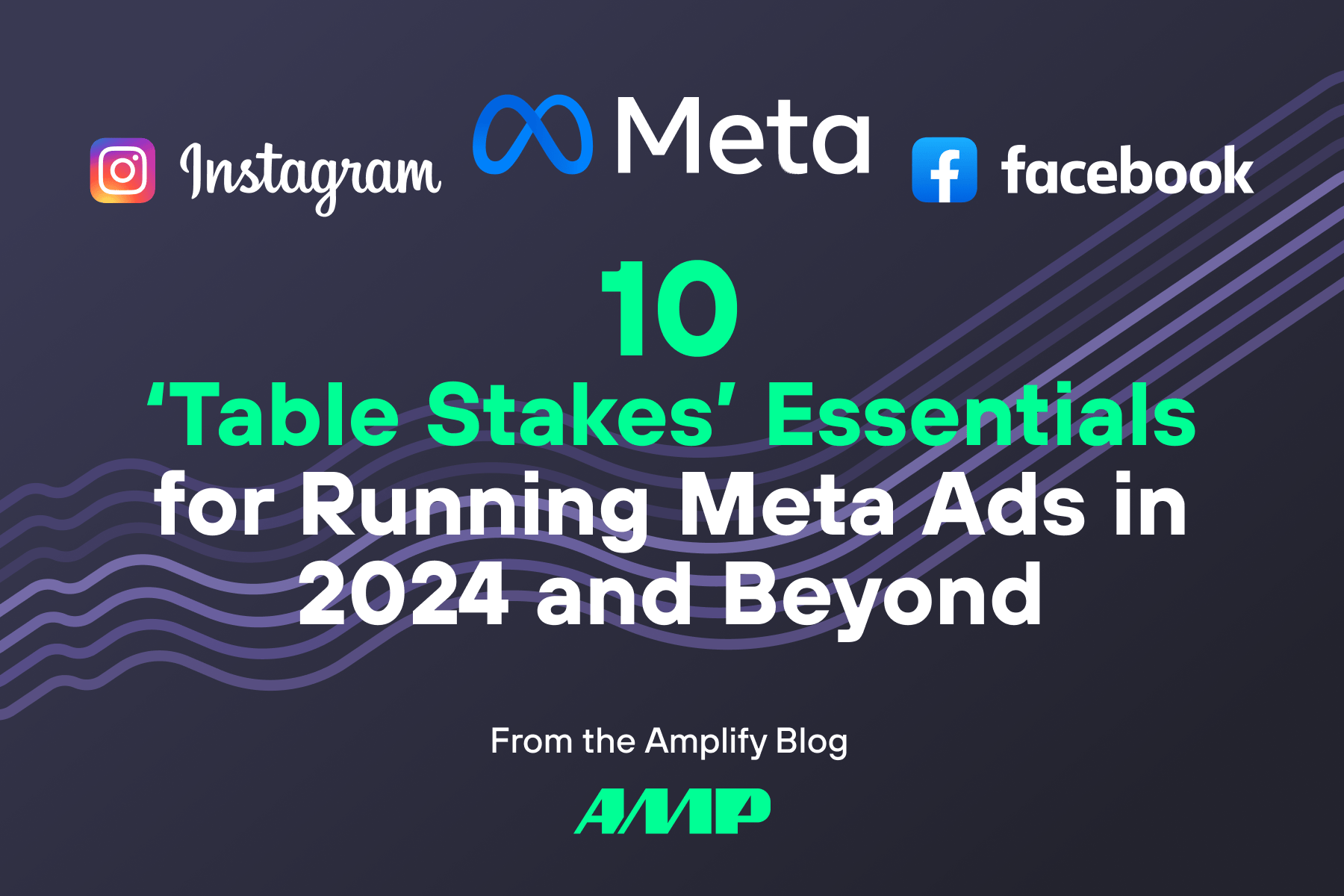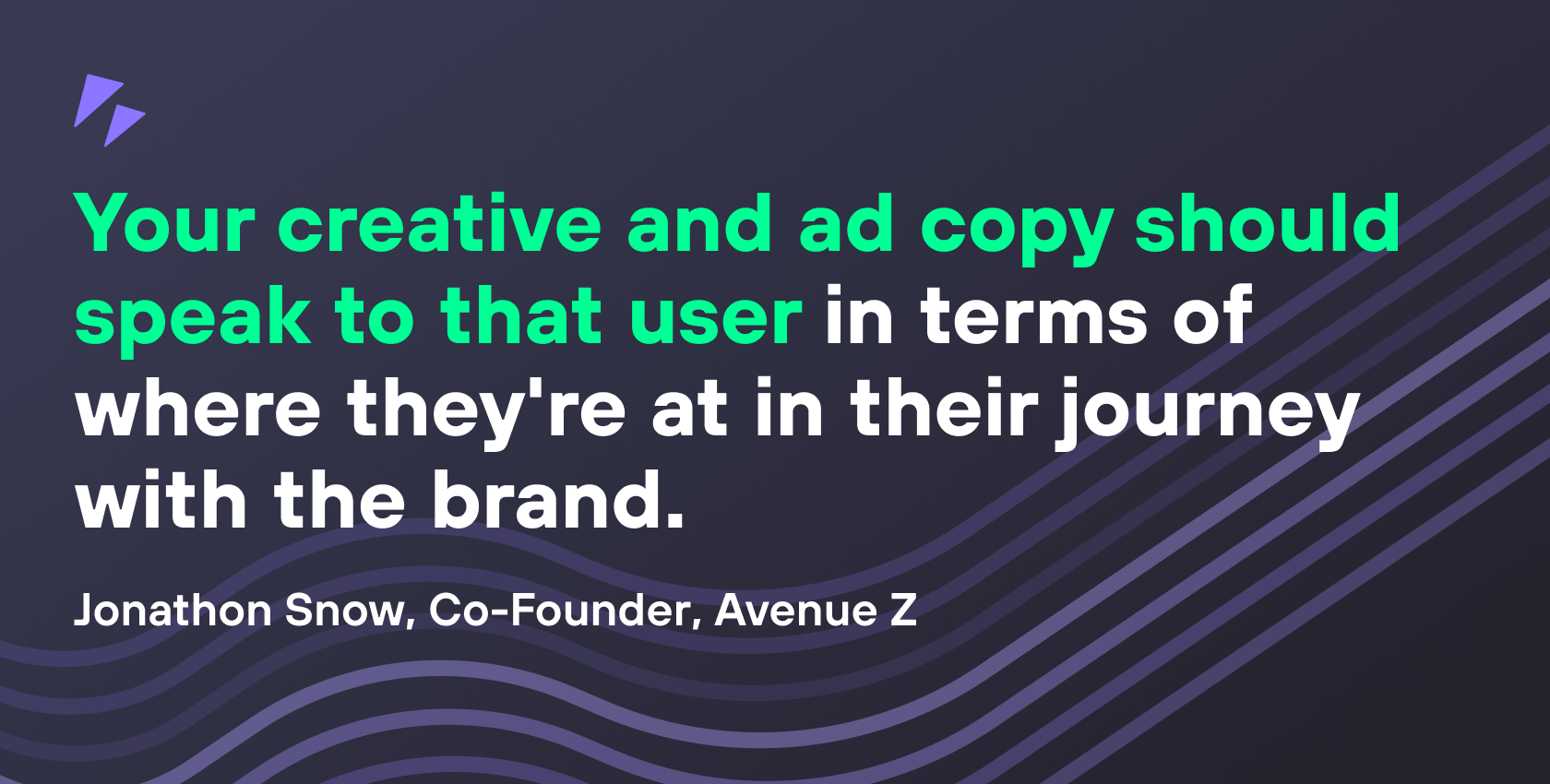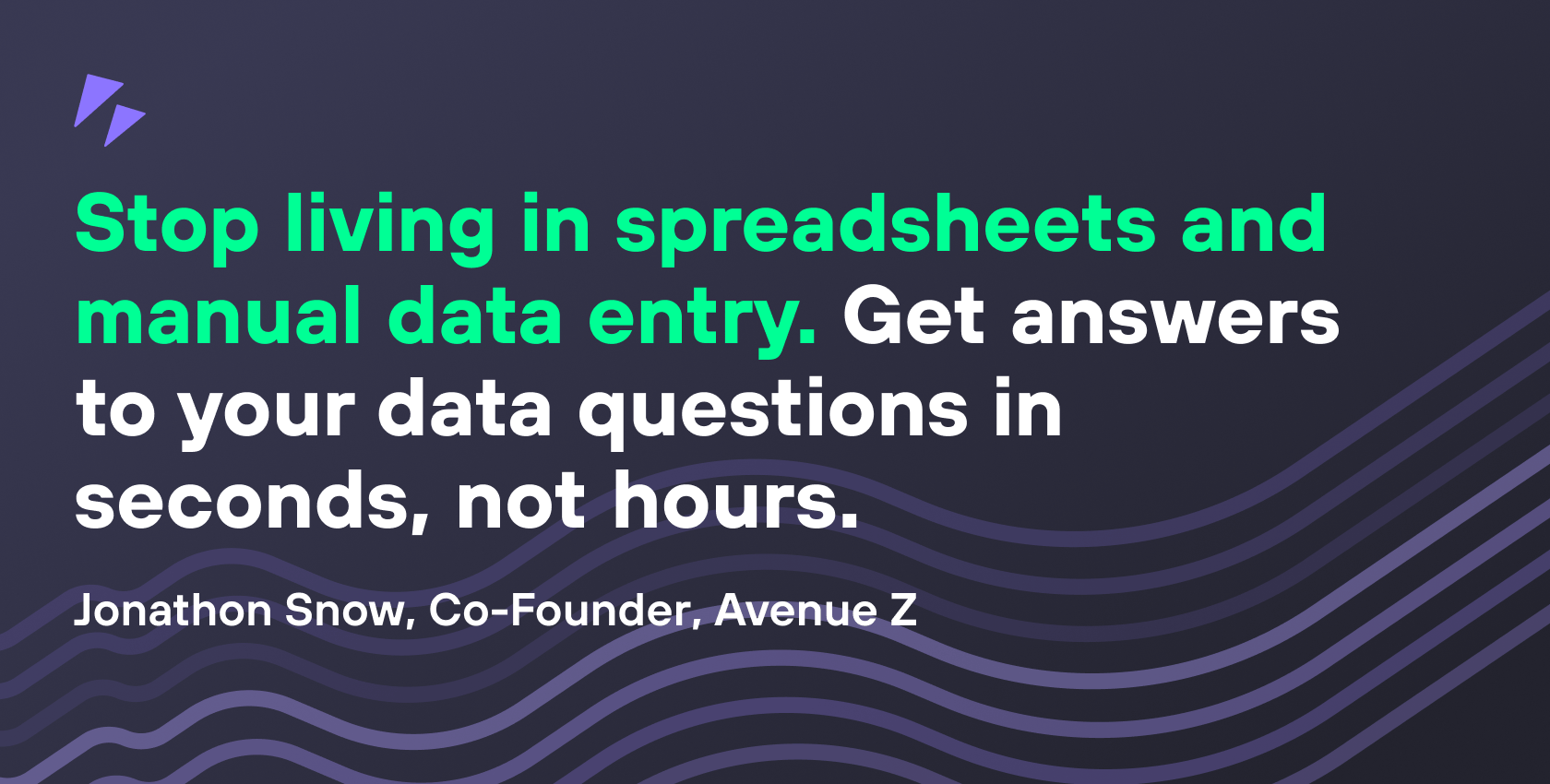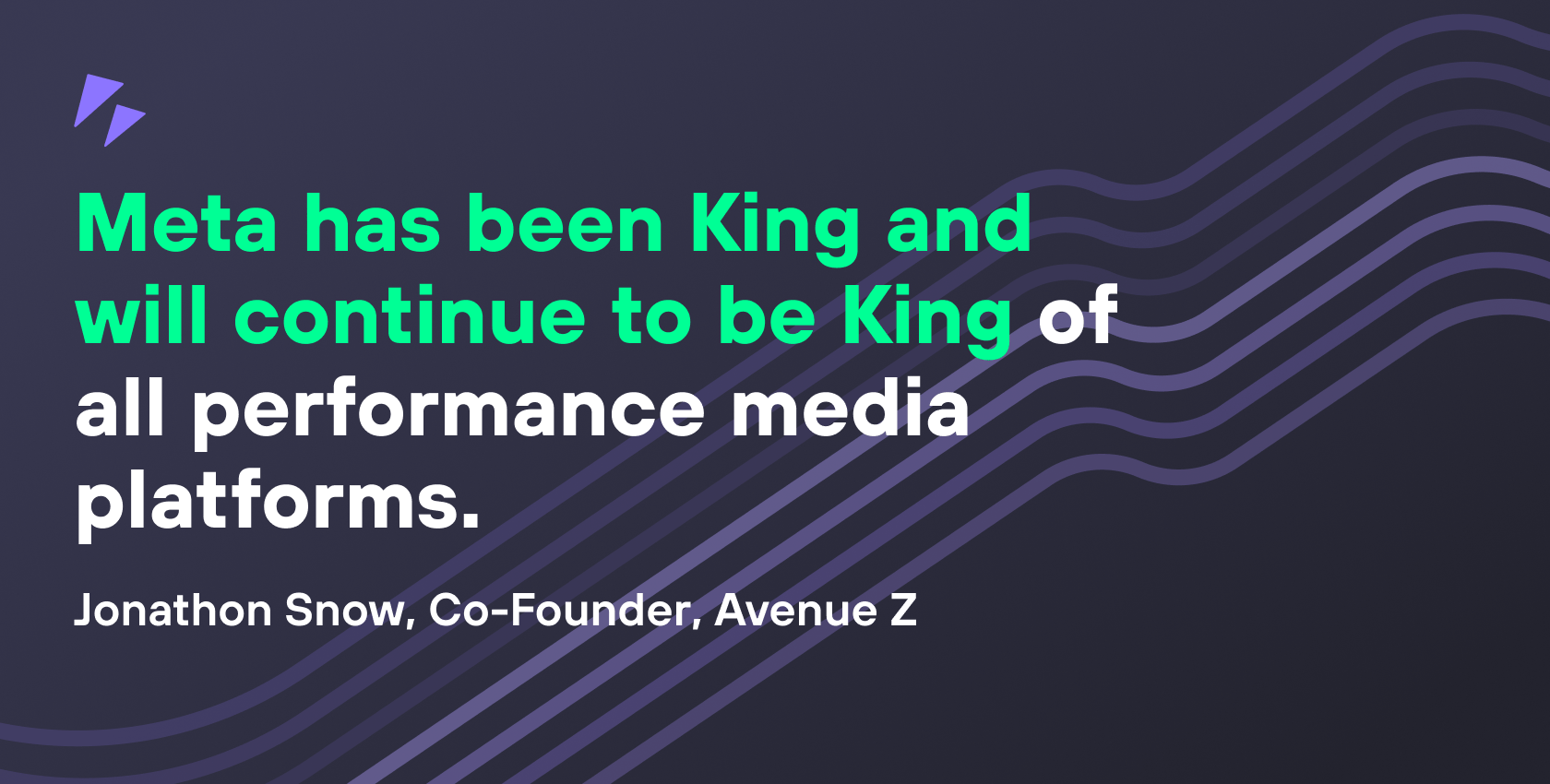Nov 20, 2024
10 ‘Table Stakes’ Essentials for Running Meta Ads in 2024 and Beyond
Meta has transformed digital marketing, giving advertisers the potential to reach a vast and diverse audience.The platform has more than 3 billion monthly active users, with over 200 million active users in the US alone and research suggests that Facebook often delivers the highest ROI among all social media networks.
However, as the platform has grown so have the challenges over data privacy, complexities of ad targeting and performance metrics. Advertisers are increasingly facing obstacles that can hinder their marketing efforts and impact their return on investment.

So what are the top 10 things you MUST do to see success with running Meta Ads? We asked Jonathan Snow, founder of the fastest growing marketing company in the US, Avenue Z;
“If you think you’ve hit a wall on Meta, there’s typically a reason why. And it’s not usually related to TAM. You haven’t saturated Meta.”
Here are Jonathon’s top 10 “Table Stakes” essentials for running Meta Ads in 2024 and beyond;
3rd Party Conversation API (CAPI) Solution
Conversion APIs connect your website to your ad platforms so you can see clicks, purchases and more on your site and correlate that information with who is taking those actions. When an ad platform has this insight with what’s happening on your site, it can better understand who your most valuable site visitors are and who made purchases. This in turn helps you find more visitors from the same or lookalike audience and also to assign credit to your ads.
Not all CAPI solutions are created equal. It can be tricky to ensure that your connection is set up correctly and that all of the data is set up with the right structure.With a third party tool you can streamline and automate setting up a conversation API.
Three CAPI solutions you might want others to consider:
Set up Instagram and Facebook shop properly
Instagram and Facebook shop product pages showcase everything your potential customers might want to know before purchasing your product including
- Product name
- Product images
- Product descriptions
- Product price
- Product images
- A link to your eCommerce store
Here are three ways to optimize your shopping posts to be more impactful.
- Ensure the visual content you choose as your shopping posts are in line with your overall Instagram aesthetic.
- Ensure that all your shopping tag links go to the right products
- You can tag up to 5 products in a single image post, this can end up with products cannibalizing each other. Give lots of space between product tags so that they don’t overlap.
Define audience segments in Advertising Settings
You can use audience segments to enable breakdown reporting for your sales campaign reporting in Meta Ads Manager.
Using the Meta Ads Manager you can access breakdown reporting for your sales campaigns. These audience segment reporting are broken down into new audiences, engaged audiences and existing customers based on audiences that you define in your ad account settings:
- New audience: People who have not interacted with your products or services.
- Engaged audience: An audience that you define in your ad account as people who are aware of your business or have interacted with your products or services, but have not made a purchase.
- Existing customers: An audience you define in your ad account settings as people that have purchased products or signed up for your services.
Before you use this breakdown reporting, you need to create your engaged customers and existing customer audience segments. A great way to create these audience segments is to use Shopify audience’s existing audience segments.
Shopify Audiences released the “existing customer” segment which is now the best practice audience for this segment. Shopify has ample first party data on Shopify customers and fills in any voids that a single brand would have on a given customer. For example: if a customer didn’t provide their phone number at checkout, Shopify would stitch that data into the customer file if that customer purchased from another Shopify brand who opted in to the Shopify Audiences program. This powers higher match rates than your conventional pixel audience, order export, or Klaviyo audience that had been used for this segment historically!
Performance creative in each ad set
Whatever the goal of your campaign, be it prospecting, retargeting or retention, creatives can have a big impact on performance. Meta’s data shows that attention-grabbing ad creatives can drive both clicks and website conversions. In fact, creatives can decrease cost per click and cost per conversion by about 20%.
Here are 3 tips to improve ad creatives and boost campaign performance
- If your specific campaign includes Reels or Stories placements, use full-screen vertical images for best results. Note that at the ad level, you can typically adjust creatives for specific destinations like Reels and Stories. That means you can use portrait format images for feed ads and upload full-screen vertical images for Reels and Stories.
- To connect with as much of your target audience as possible, aim to include multiple creative formats in each campaign. The easiest way to include different media types in a single campaign is to switch on dynamic creative at the ad set level. Then at the advertising level, you can upload a mix of up to 10 images and videos. You can also add up to five different options for each copy field, including headlines and descriptions.
- Image-based ads can certainly drive results but Meta’s recent study indicated that short videos in particular lead to higher ROI. So if you have limited time or budget, it’s a good idea to focus on video first. For ads in the feed, square (1080 x 1080) and portrait formats work best. But when you advertise in the Reels feed, full-screen vertical videos (1080 x 1920 pixels) are essential. You can always produce feed and Reels creatives in a third-party video editor app before uploading them to Ads Manager.
Standardized naming conventions
Campaign naming conventions are a set of rules used to create consistent and informative names for campaigns, ad sets, and individual ads. This structure typically includes information such as campaign objectives, target audience, platform, and date. Standardized naming conventions help marketing teams efficiently track performance, avoid confusion, and maintain organized records, thereby improving reporting accuracy and facilitating better decision-making.
To maintain consistency in ad campaign naming conventions, it’s crucial to establish and document clear guidelines that everyone on the marketing team follows.
- Start by defining the key components that should be included in every campaign name, such as campaign objective, target audience, platform, and date.
- Create a standardized format or template that incorporates these elements in a specific order. For example, a consistent format for UTMs might be Source_Medium_ Ad type_ Audience_Campaign.
- Document these guidelines in an accessible format, such as a shared document, folder, or knowledge base and ensure that all performance marketers and agencies are trained on these standards.
Naming conventions that enable data flexibility
A well thought out and consistently used naming convention keeps metadata standardized. This ultimately provides the key to associating additional attributes and metadata from your digital marketing campaigns. Having set standards and governance when running campaigns is important because this directly impacts allocations across your ads budget.
Skip out on naming conventions and you run the risk of getting bad or missing data. Bad and missing data turns into poor reporting, which ultimately leads to costly decisions based on incorrect conclusions.
Dedicated campaigns for each part of the funnel

When it comes to creatives for your ads, it might be tempting to go with a one size fits all approach and use a particular creative for all prospecting, re-targeting and retention. This method takes less time to execute on and is cost effective. However, you’re more likely to get better results with dedicated campaigns for each part of the funnel, each with its own specific creative.
When it comes to prospecting, retargeting, and retention campaigns, your creative and ad copy should speak to that user in terms of where they’re at in their journey with the brand. If they’ve been to the website and haven’t purchased, it signals they’re interested, but there’s an obstacle preventing them from purchasing.
Use post-purchase surveys to uncover any friction points for why consumers almost didn’t purchase. Use these reasons in your creative for your retargeting audiences. For example: if customers’ top reason for almost not purchasing was unclear shipping times, then have your creative or ad copy speak to this.
Perhaps add overlays on your creative that highlight “2-Day Free Shipping!” or any other reference to it. Use the same approach to other friction points reported by your customers. This will help alleviate potential customer concerns and drive that segment across the finish line to a conversion.
Analytics/ Dashboard that automates reporting

Creating, tracking and automating reports for Facebook ads can be daunting. That’s where automated ads reporting comes in handy.
A comprehensive automated Facebook Ads report can help you understand how your ads are performing, what your audience is engaging with, and what adjustments you need to make to achieve your marketing goals without the hassle of manually collecting and dissecting your crucial ad metrics.
Utilize a dashboard that centralizes your data in one place. There are analytics providers out there that power this so you don’t need to build out a data program in house. Lifetimely and Source Medium are two great options to facilitate this. Stop living in spreadsheets and manual data entry. Get answers to your data questions in seconds, not hours.
Upsell/ Cross-Sell App on site to increase Average Order Value (AOV)
Research has found that around 30% of customers purchase again from a brand within a year of their first purchase. As the cost of acquisition continues to rise, a good strategy to consider is to focus on retargeting ads; sometimes the best opportunity is one you’ve already created!
Running paid campaigns to drive upsells/cross-sells on site can increase each customer’s lifetime value and average order value, increasing your revenue. When creating your remarketing campaigns, think strategically about your buyer personas and create creatives that re-appeal to them with compelling messages that speak to their specific wants, needs, and desires- based on their previous purchases.
For example, if a customer has purchased candles from your store in the past, you might want to remarket them with a bundle of a seasonal release of scents or upsell them on an essential oil burner. You can also add a personal touch to these as by offering limited time discounts, early access or free gifts.
One thing to factor into your remarketing campaigns is timing. It is useful to use a reporting tool to determine the repurchase rate on your products so that you know when cohorts of customers are most likely to make repeat purchases. This a great way to serve higher value items at the optimal time.
Incrementality Testing

Incrementality Testing refers to a strategy of testing small changes to your marketing campaign rather than making large, sweeping adjustments. This approach allows businesses to optimize their marketing efforts by isolating and understanding the impact of specific changes, thereby reducing risk and maximizing ROI over time.
Incrementality Testing allows brands to refine ad campaigns with precision. By making gradual adjustments to variables like ad copy, targeting, creative, or bidding strategies, ecommerce stores can identify what works best without disrupting overall performance. This approach provides more insights into the true effectiveness of campaigns. Incremental tests allow for data-driven decisions, leading to optimized marketing spend and improved conversion rates. This approach also reduces the risk of false positives or overestimating the impact of one tactic over another.
To test the effectiveness of different ad creatives for a product, an ecommerce store could run a small-scale incremental test by creating two versions of an ad-one with a product-focused image and another with a lifestyle image.
Both ads would be shown to similar audience segments (e.g., targeting users aged 25-40, interested in fashion) on Facebook or Instagram. The store could allocate a small daily budget to each ad set for a short period, such as 3-5 days, measuring key metrics like click-through rate (CTR), conversion rate, and return on ad spend (ROAS).
Based on the results, the ecommerce store can identify which ad creative performs better and scale the winning version to a larger audience or increase the budget, thus incrementally improving overall ad performance.
Meta has been King and will continue to be King of all performance media platforms. It currently commands >70% of DTC budgets and is likely to stay there. The level of scale, stability, and performance have Meta as the leader for the foreseeable future and it won’t change any time soon. Keep an eye out for the new kid on the block: AppLovin. Early ecommerce ads tests there are showing signs of serious promise. We’ll see how it scales in 2025 when the closed beta is rolled out to general public. 2025 should be a promising year for performance media platforms as a whole, which are largely dependent on the strength of the US consumer. Given inflation and interest rates are subsiding, the consumer should only get stronger, which means more spending on things they see in ads.
Maximize your Meta Ads spend with Lifetimely
Start today,
for free
Start a free trial of any of AMP’s tools today.

